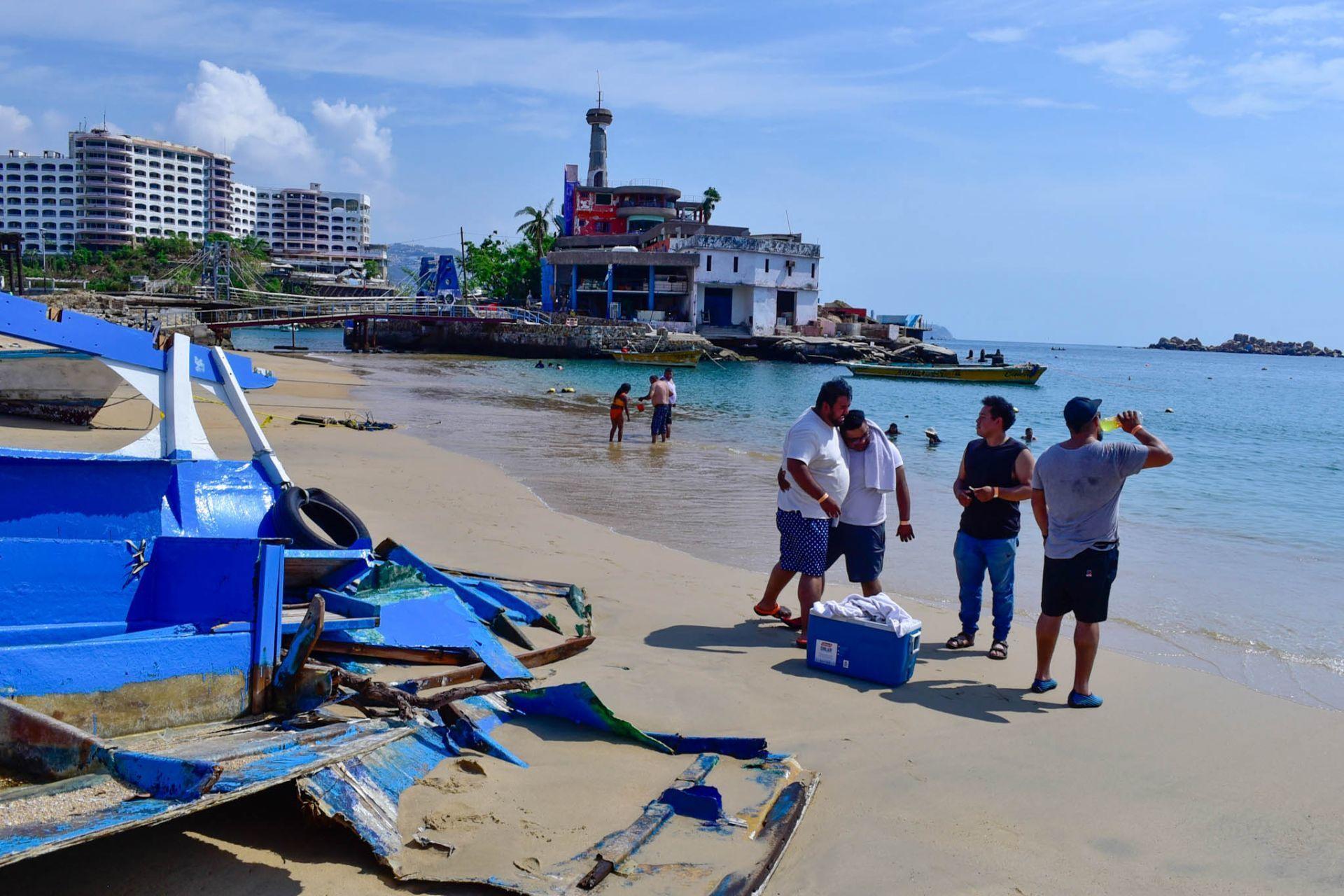The attacks of Otis, a category 5 hurricane, off the coast of Guerrero destroyed, sunk and ruined fishing gear, boats and engines. In order for fishermen to reactivate, the federal government announced that they would send them BienPesca, an annual support of 7,000 pesos, which, in the eyes of Alfonso Medellín Ortiz, an independent consultant specialized in fisheries and resilience, is insufficient to face the losses of the sector.
“To think that this (Bienesca) will meet their needs and that it will help them to meet their needs, well, definitely not. It could be a momentary relief, but neither is it, because what the sector wants is to return to work,” he said.
At a press conference on November 8, the president of Mexico said that Guerrero's fishermen “are going to receive support,” referring to Bienesca. However, support for 2023 was already dispersed in July, so the strategy is to advance their 2024 resource.
This support is strategically delivered before or just at the beginning of the closed season for the most important species to prevent illegal fishing. However, Medellín opined that “Bienesca is a program that is not really designed for anything other than giving money”, because it does not meet the objective of meeting the economic needs of the sector for an entire season, since that money is not enough even to cover the basic needs of a family for a month.
“If this resource was not enough to cover a period of closure, now they give it to them to try to make up for the economic activity they are losing because they have lost all their materials and their methods and their fishing gear and their work and their means of livelihood, because it's simply ridiculous and it's offensive,” he said.
Species important to fishing fled the turbulence during the hurricane, but as coastal water cleans up, they begin to return. However, even if anglers want to, without their boats and fishing gear they cannot go out to sea.
“The time it will take to recover will not be so much the biological part, but it will be more of the economic part of the infrastructure, if you have lost your work tools,” Medellín said.
Alternative strategies

The ravages of Hurricane Otis in Acapulco, Guerrero. Source: Carlos Alberto Carbajal/Cuartoscuro
A better strategy for an early recovery of the sector, according to Medellín, would be for the federal government to undertake a program so that, through flexible credit, fishermen can obtain fishing gear, boats and motors again, as was done before.
“At some point, Conapesca had engine and boat replacement programs where the federal government provided a percentage of the vessel, the other percentage was paid by the permit holder and then there was a way to recover. That would be a way to recover your assets, capitalize and pay what you owe. Otherwise it could take maybe three, four months to recover, if all things were going well; it could take up to a year, maybe longer,” he says.
In addition, he pointed out that what happened with Otis was a disgrace and that it shows that Guerrero was not ready to receive the hurricane due to the level of response and impact generated by the meteorological phenomenon, but this can be improved to make communities more resilient to future weather variations.
For example, in the long term, the quality of the data available to know the state of fisheries should be improved, so that fishermen can make informed decisions. In this way, prevention is encouraged through planning.
“You know the level at which a population is exploiting it and at the same time you know how environmental variability acts on this population. With this, you can recommend better measures and better strategies for the sector to take advantage of the resource in such a way that it is sustainable over time and that the population you are taking advantage of endures the shocks of climate change and environmental variability,” he said.



Comentarios (0)